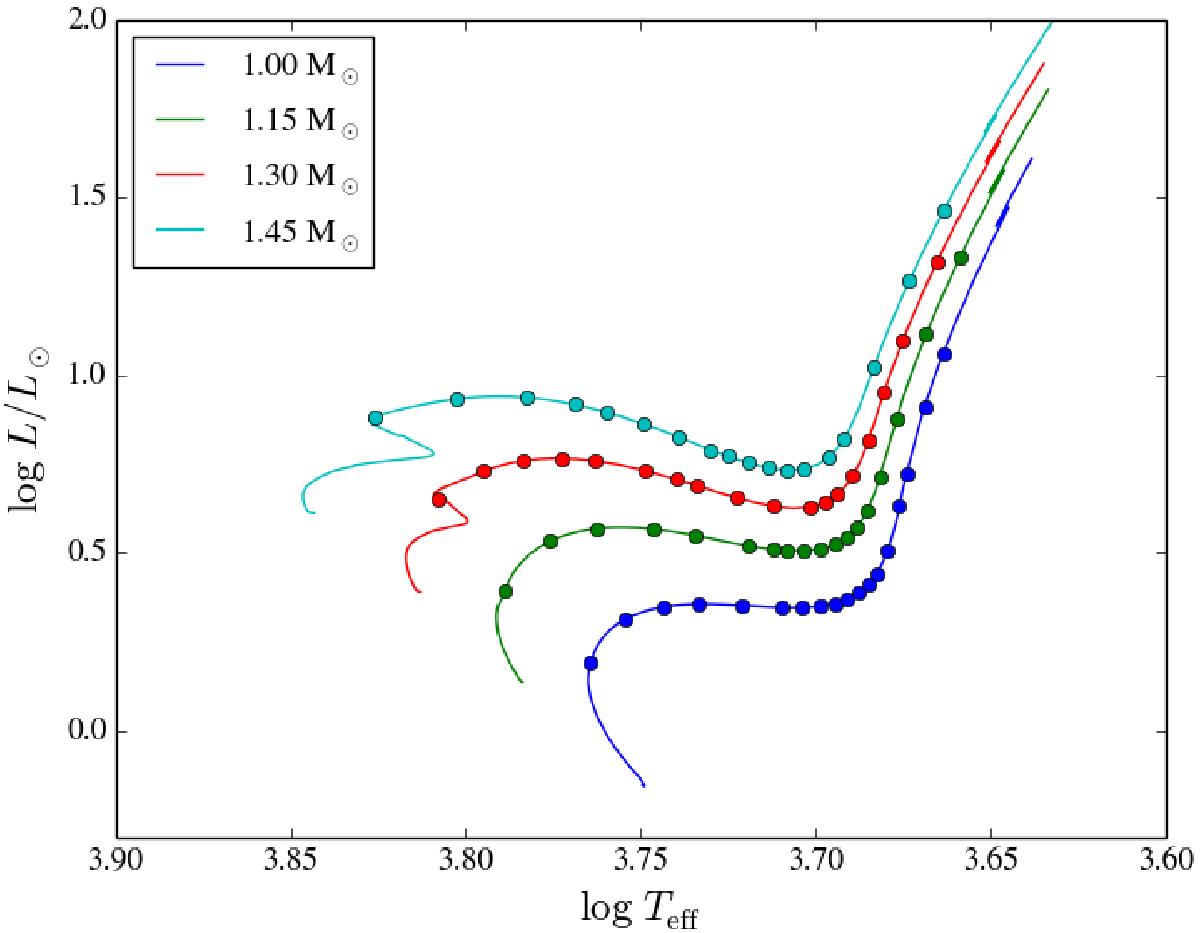Can plume-induced internal gravity waves regulate the core rotation of subgiant stars?
Abstract
Context. The seismic data provided by the space-borne missions CoRoT and Kepler enabled us to probe the internal rotation of thousands of evolved low-mass stars. Subsequently, several studies showed that current stellar evolution codes are unable to reproduce the low core rotation rates observed in these stars. These results indicate that an additional angular momentum transport process is necessary to counteract the spin up due to the core contraction during the post-main sequence evolution. For several candidates, the transport induced by internal gravity waves (IGW) could play a non-negligible role.
Aims: We aim to investigate the effect of IGW generated by penetrative convection on the internal rotation of low-mass stars from the subgiant branch to the beginning of the red giant branch.
Methods: A semi-analytical excitation model was used to estimate the angular momentum wave flux. The characteristic timescale associated with the angular momentum transport by IGW was computed and compared to the contraction timescale throughout the radiative region of stellar models at different evolutionary stages.
Results: We show that IGW can efficiently counteract the contraction-driven spin up of the core of subgiant stars if the amplitude of the radial-differential rotation (between the center of the star and the top of the radiative zone) is higher than a threshold value. This threshold depends on the evolutionary stage and is comparable to the differential rotation rates inferred for a sample of subgiant stars observed by the satellite Kepler. Such an agreement can therefore be interpreted as the consequence of a regulation mechanism driven by IGW. This result is obtained under the assumption of a smooth rotation profile in the radiative region and holds true even if a wide range of values is considered for the parameters of the generation model. In contrast, on the red giant branch, we find that IGW remain insufficient, on their own, to explain the observations because of an excessive radiative damping.
Conclusions: IGW generated by penetrative convection are able to efficiently extract angular momentum from the core of stars on the subgiant branch and accordingly have to be taken into account. Moreover, agreements with the observations reinforce the idea that their effect is essential to regulate the amplitude of the radial-differential rotation in subgiant stars. On the red giant branch, another transport mechanism must likely be invoked.
- Publication:
-
Astronomy and Astrophysics
- Pub Date:
- September 2017
- DOI:
- 10.1051/0004-6361/201730998
- arXiv:
- arXiv:1705.10101
- Bibcode:
- 2017A&A...605A..31P
- Keywords:
-
- stars: rotation;
- stars: evolution;
- stars: interiors;
- waves;
- hydrodynamics;
- Astrophysics - Solar and Stellar Astrophysics
- E-Print:
- Accepted for publication in A&
